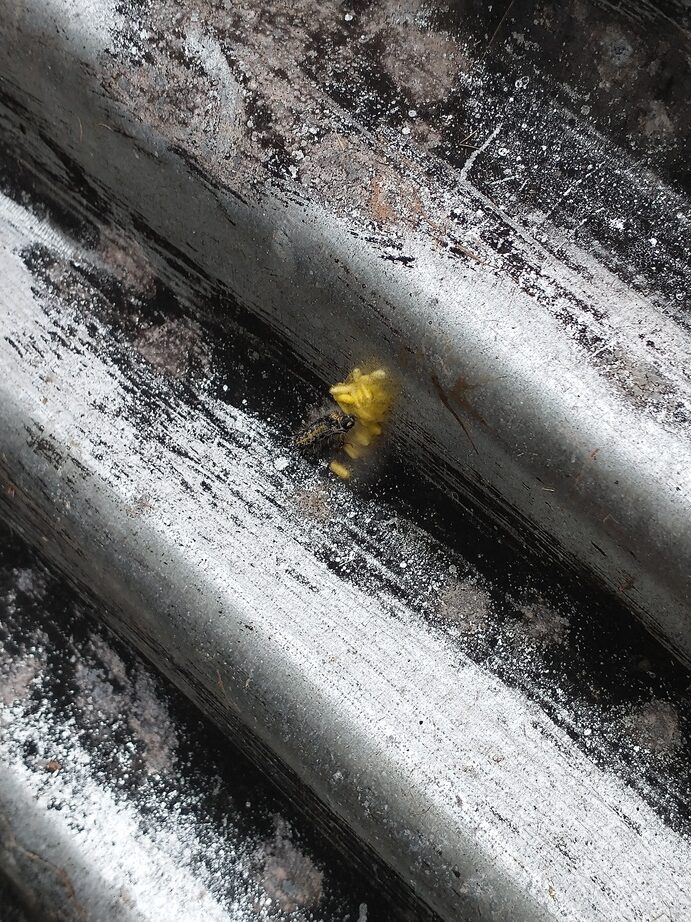I spent a bit of time in the polytunnel today, removing tomato plants that no longer have any useful fruit and generally tidying up the rest to make their removal a little easier on Saturday. Pretty much everything is going to come out of the polytunnel on Saturday, with the possible exception of the pepper plants which still have fruit ripening. After spreading compost on the beds I'll then have room for the remainder of my winter salads which are already quite stroppy with me for not having planted them out yet. I've saved one fruit from my Amish Paste tomatoes to try to save the seed from. If I get enough I'll try germinating a few so I know if I need to order more for next year or not.
Out in the main plot I've also been doing some weeding and spreading woodchip where some of the paths are starting to get a bit muddy. I've no idea where all the woodchip I spread on them last winter has gone. Some of it was dug about by blackbirds, but at least I could see where they'd spread it. In other places it just seems to have disappeared completely. Fortunately I'm not short of woodchip at the moment having taken a few tonnes off the hands of some people doing tree work locally (they'd have to pay to dispose of it otherwise). I was hoping to get some more in a similar way -- the road past our house has theoretically been closed for the last two weeks to allow tree work and telegraph poles to be replaced prior to Openreach running fibre. Two mornings have been spent replacing poles, but I've not even seen anyone doing tree work

Whilst working on one of the paths I found a clear set of deer hoof prints that must mean they visited on Thursday night. They're probably my main animal pest at the moment. They seem to have a hierarchy of "preferred plants to eat". Beetroot leaves and chard are clearly well up there. They gave the parsley a serious hammering last year too, but I don't have any growing outside this year. Then they go for the leaves of the strawberry plants and after that my father-in-law's alstroemerias. I also have a few major weed "pests" that are proving hard to clear up. Hairy Bittercress for a start. I'm wondering if it might be self-fertile as I'm finding plants that must presumably be at least the second generation this year in areas that have been covered by mesh for months. I also suffer a fair bit with Galloping Buttercup, which is very similar to Creeping Buttercup, but you get the idea. And White Clover. I'm quite happy to have White Clover elsewhere, but it really does seem to want to encroach on my veggie beds, and to try to do so in a big mat of leaves and roots when it does. I might have to try smothering it with more cardboard.
James




















































